
Issue 018
October 2006
By Barry Gibson
Much is written about “functional training” and “core stability” in the training industry and they seem to be the buzzwords of the moment, even the mainstream fitness magazines have jumped on the bandwagon. But just how important is the core to a combat athlete?
In case you’re wondering, very important! Make no mistake; the core is the very hinge that links your upper and lower body together. Without core strength, your kicking, punching, clinching and grappling will never be all it can be.
Mention the core or mid-section and for most people it conjures up images of fitness mag cover models with a perfect six-pack. The core consists of much more than this however. The deep mid-section muscles comprise of transverse abdominals, multifidus, and internal obliques, external obliques, iliacus, psoas major.
Leaving anatomy and physiology alone however, Scottish strength coach Alwyn Cosgrove describes the core as anything except the limbs! If you think about it, this makes perfect sense. Ask Alwyn how he trains his core and he’ll tell you that offset weights, and overhead work are where it’s at. Sit-ups and crunches won’t do a thing for the core!!
I’ve mentioned in past writings that MMA and grappling takes place on a number of different levels with exchanges occurring in a variety of anatomical planes. The bulk of these movements are performed by the whole body but with a weak link in your chain, such as the core, your performance will be somewhat hindered. Specific core work such as rotational drills, offset kettlebells, and stability drills are the way forward. You need to work the angles! So doing crunches in one of those “ab roller” things that you see in gyms won’t help a bit!
What follows are some kettlebell drills for you to try and maybe implement into your current regime. Give these a try and don’t neglect your core because you’re only as strong as your weakest link. Don’t give Anne Robinson an excuse!! If you have any queries please feel free to contact me, [email protected] and train hard!!
Kettlebell Front Squats
Technically a leg exercise but there’s some serious core involvement here by holding the bells in the Rack Position. You can up the intensity by using two bells but one hammers the core really well too!!


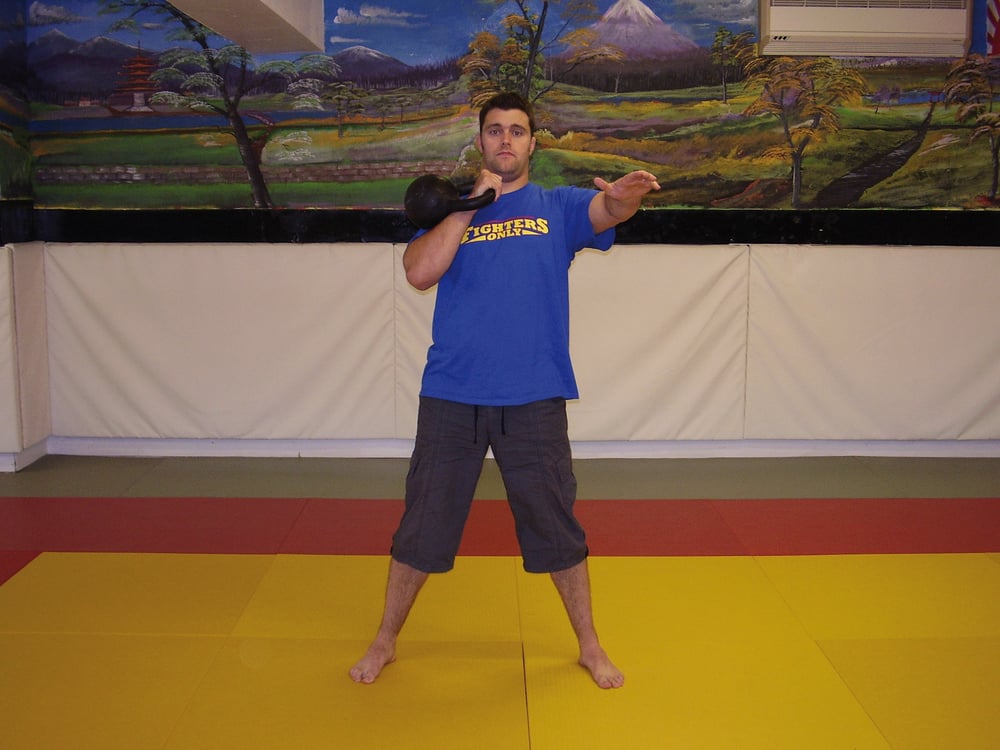
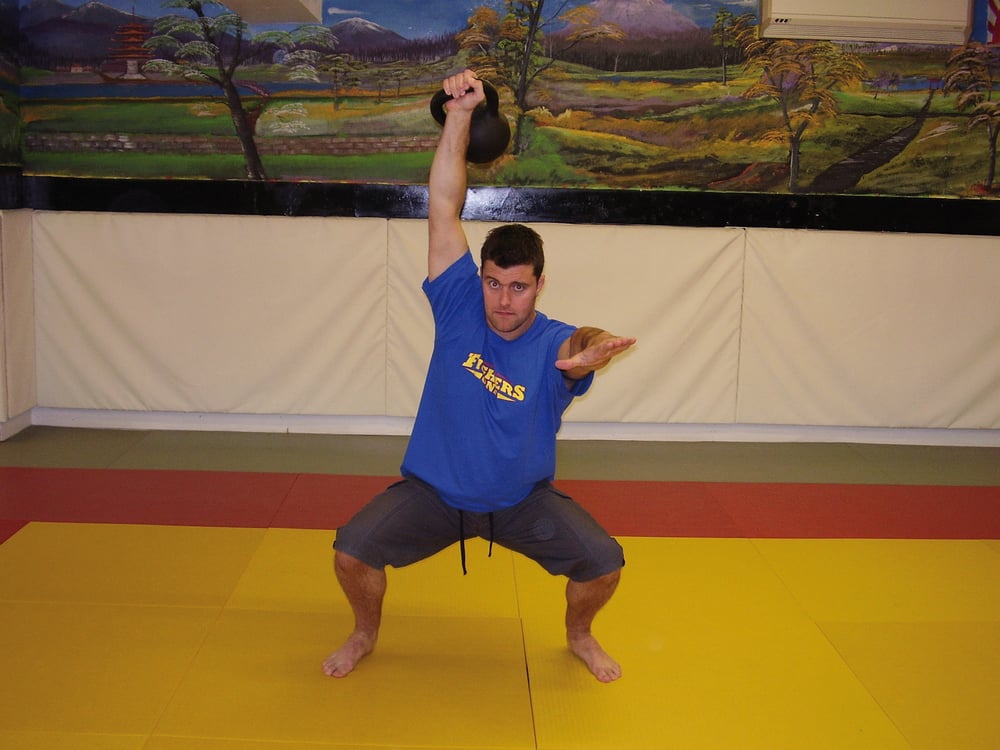
Kettlebell Twists
These are just plain nasty! Use a fairly light weight and a “touch & go” tempo.
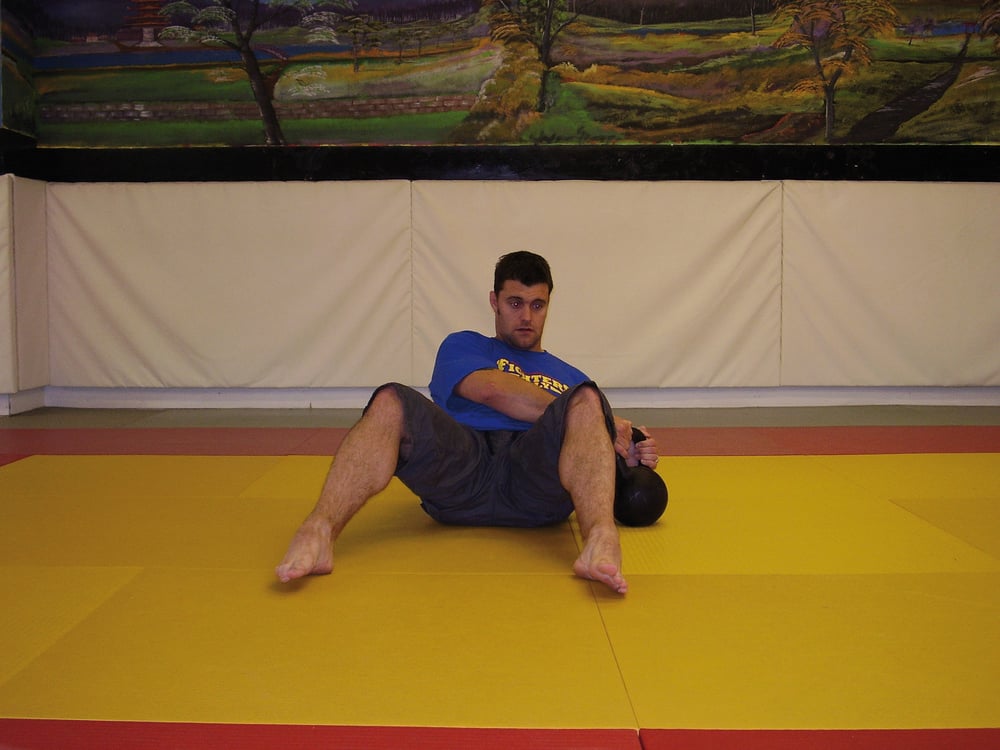
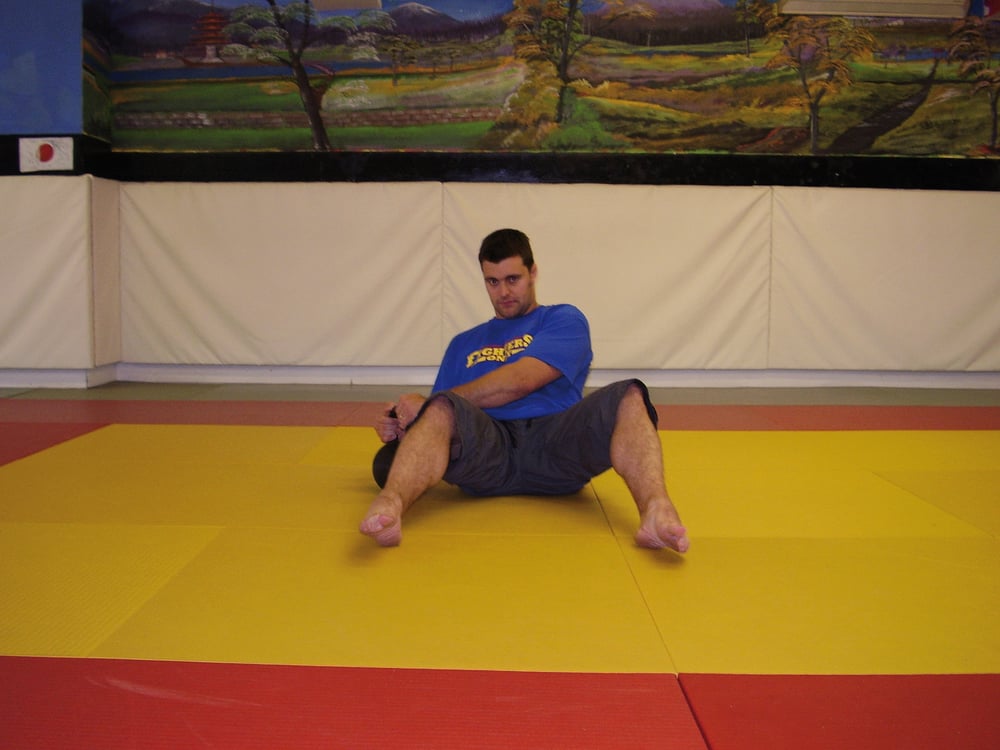


Deadlift Twists
Like most good core movements, this will build strength throughout the body. Use it sensibly at first and build up the intensity as you progress.
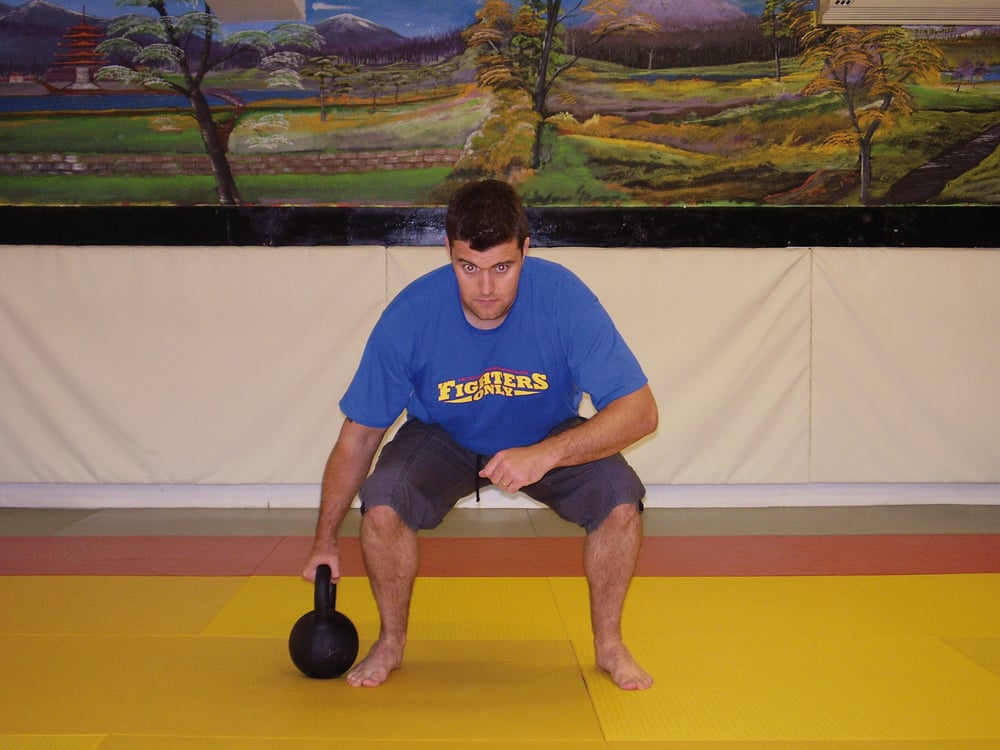

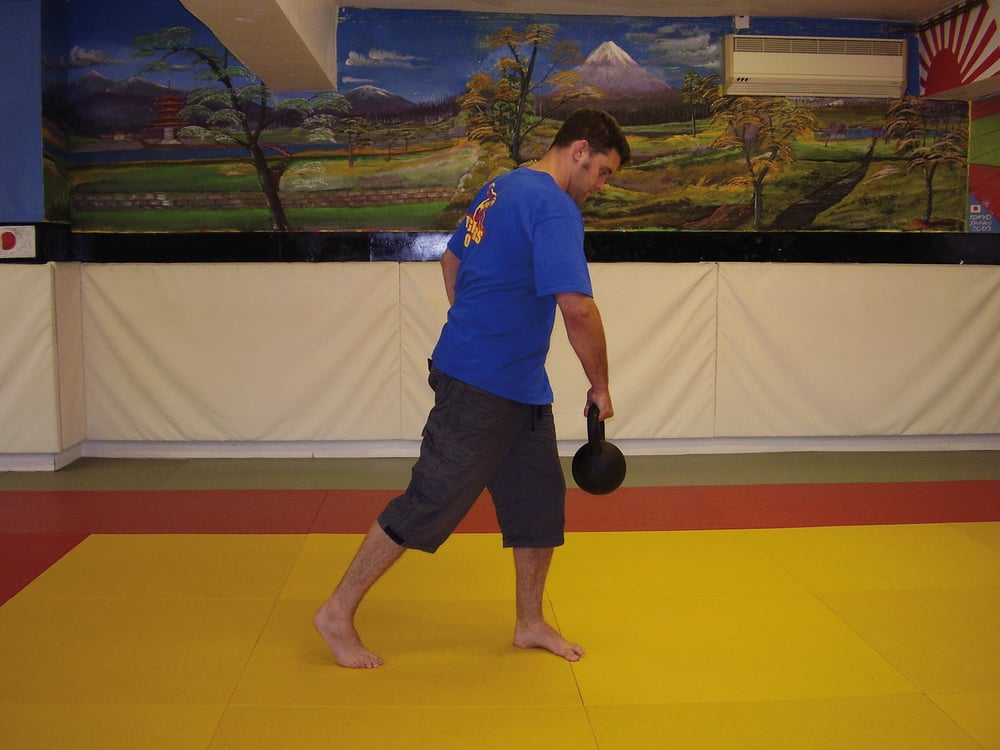
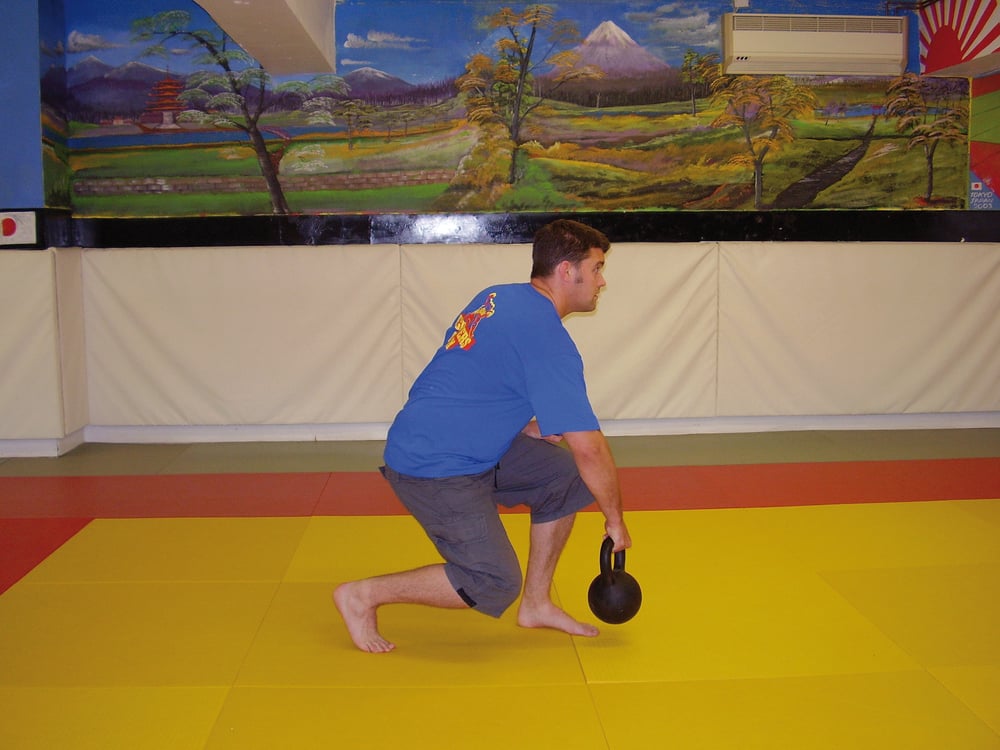
Caution – As you lower the weight, keep your back flat and bend your legs!!
Work both sides evenly.
Turkish Get-up
As well as hammering the core, this movement tests flexibility and balance. In brief, stand up from a supine position holding a kettlebell at arms length.

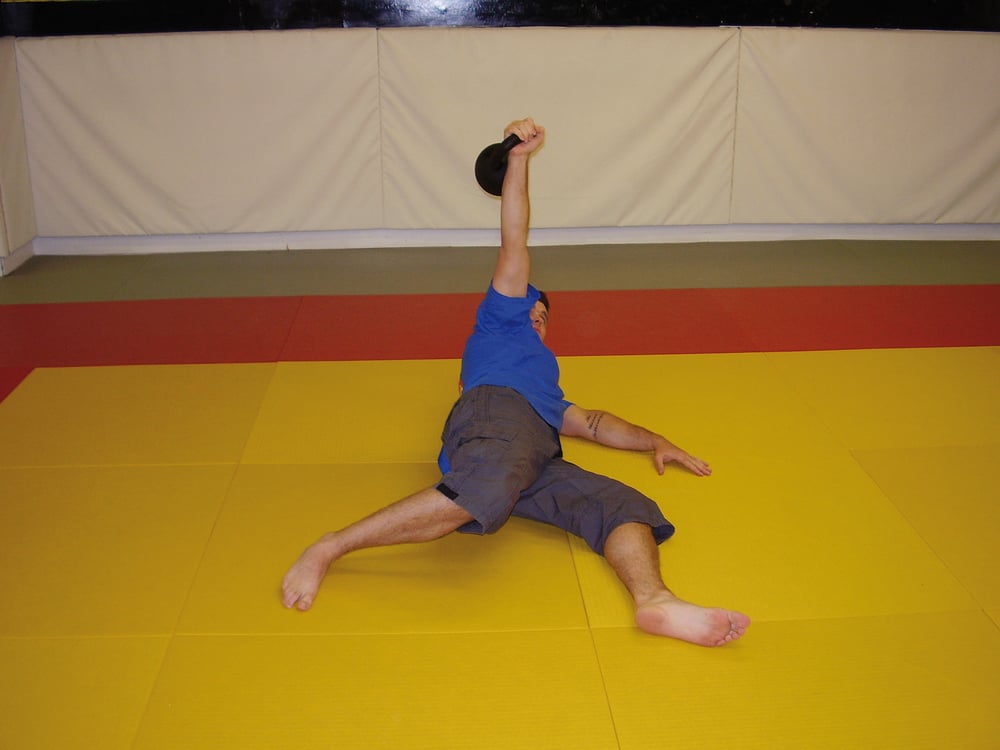
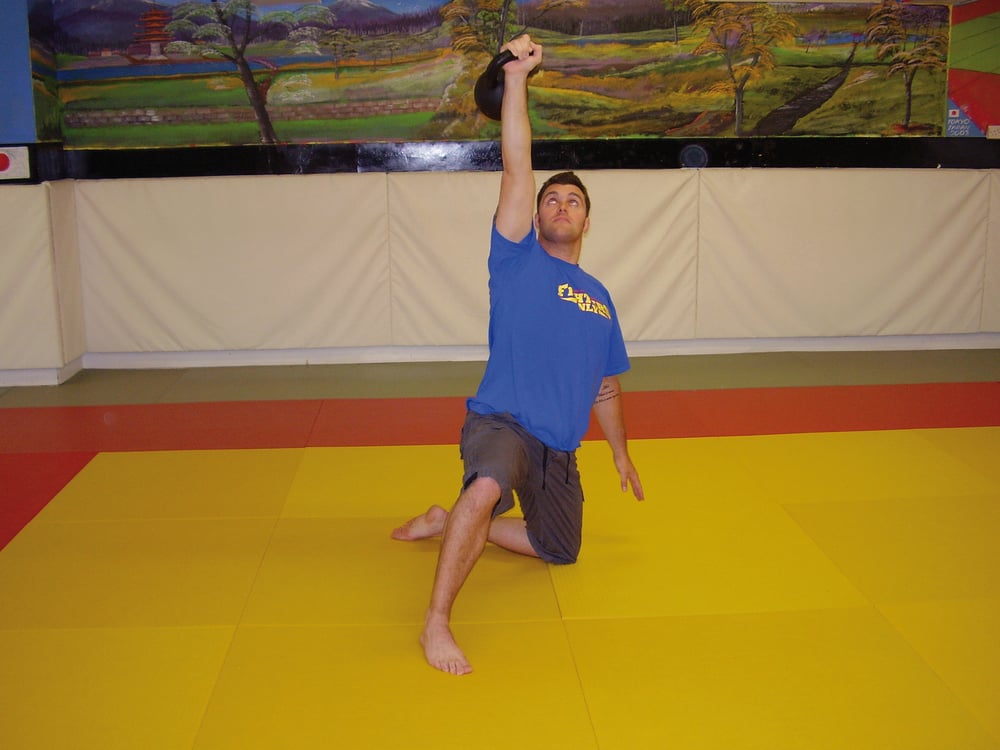

There you have it. Some great core drills to add to your routine. To progress these drills increase the reps or weights as you would do normally but for an extra kick to the squat and deadlift twist try putting one foot on a soft mat and one on a solid, raised surface! Go steady! Train hard and smart.










